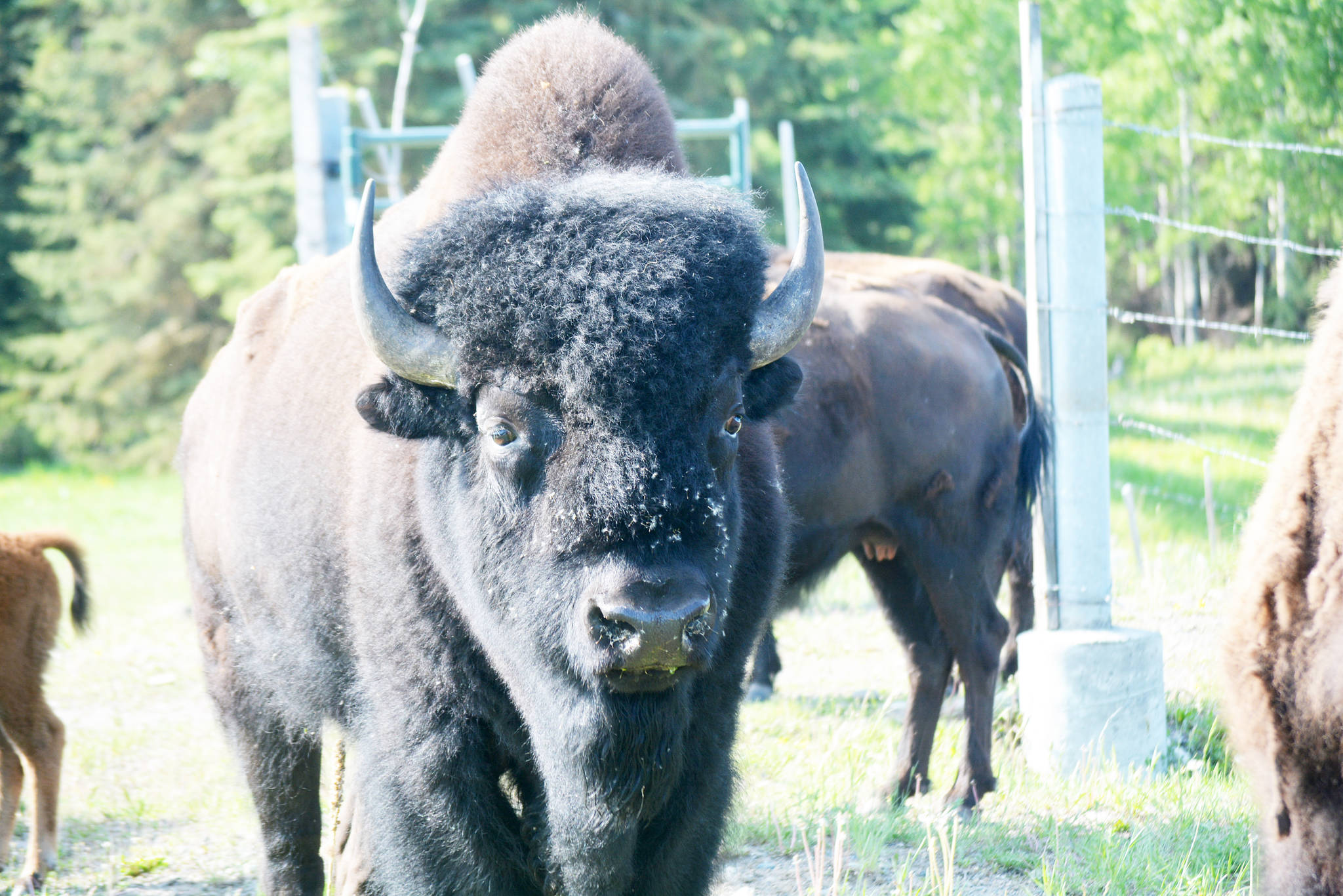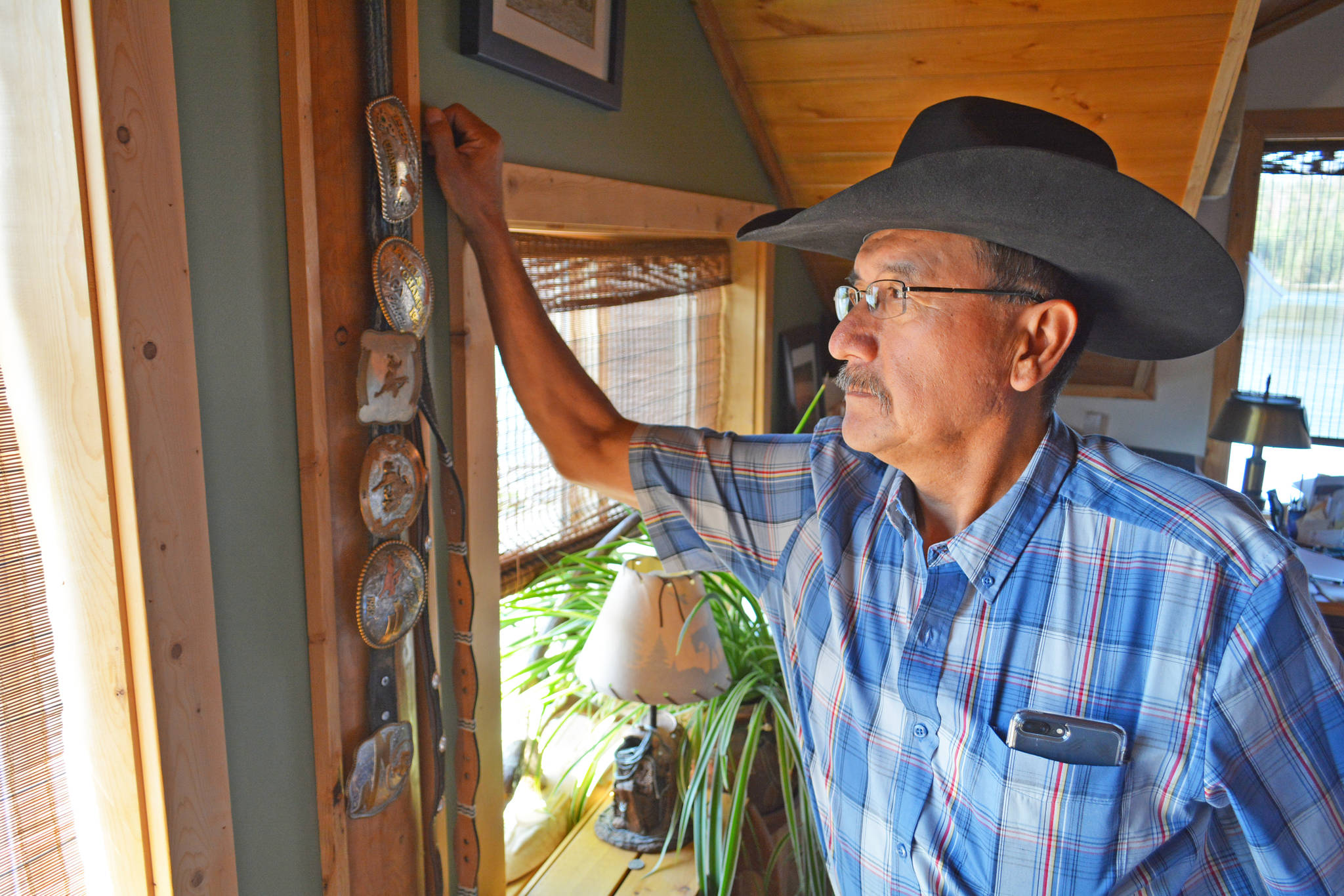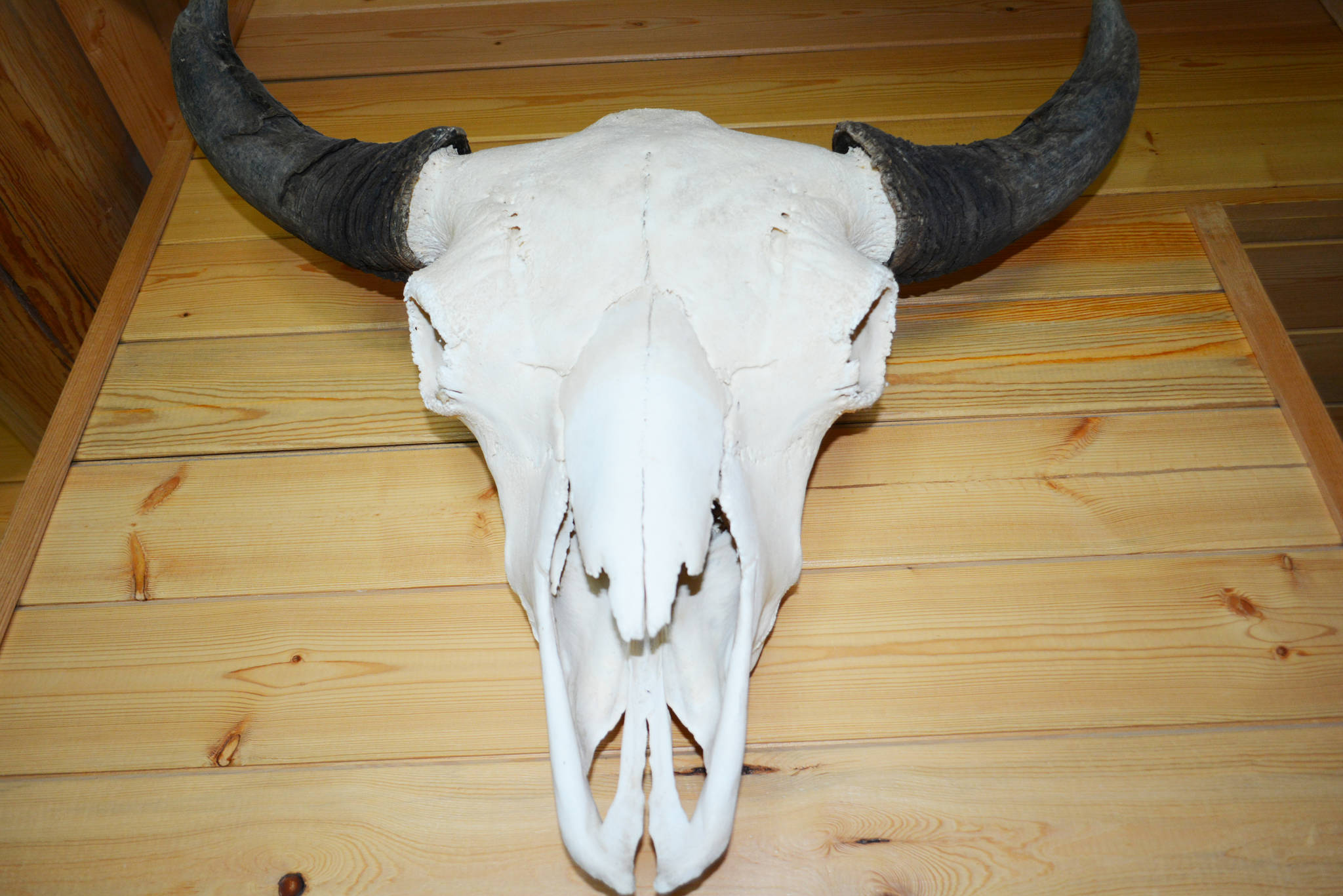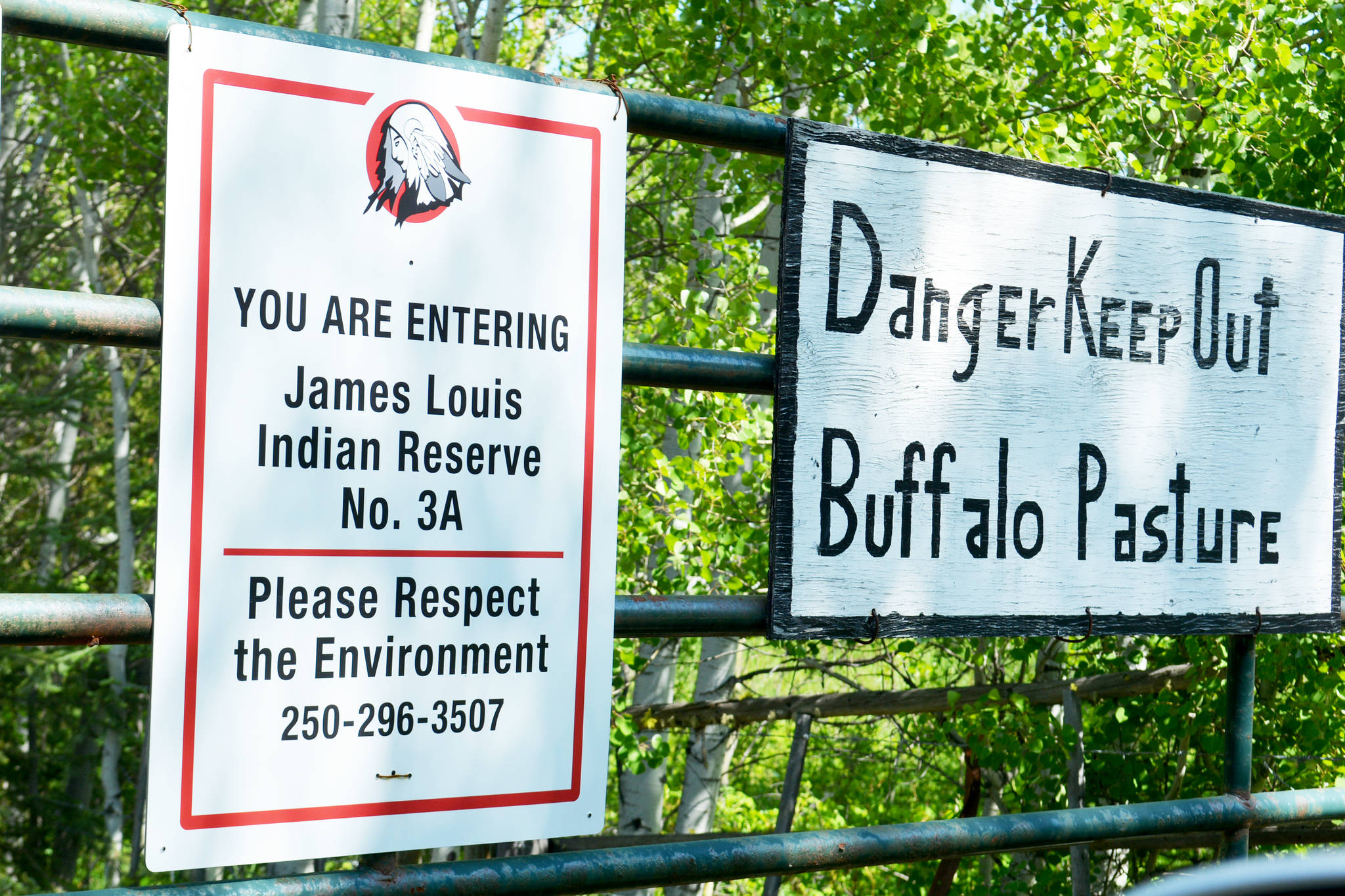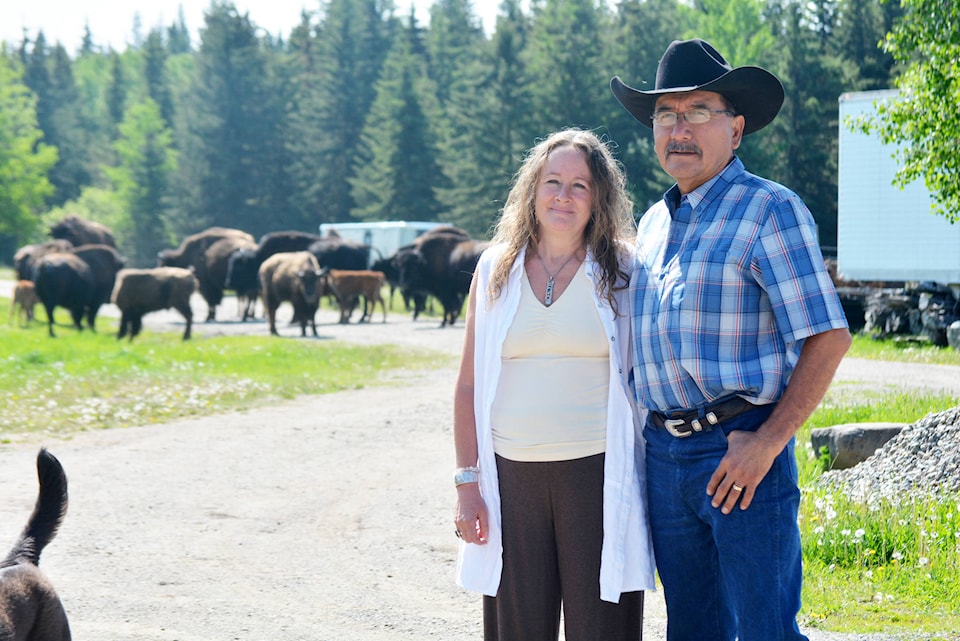A herd of bison living in the Cariboo could not have found a better place to thrive than with Tom and Karen Alphonse.
“They are one of the more natural North American animals,” Tom said, sitting at their kitchen table while the bison grazed about 100 metres from the house.
“With the history of how they were slaughtered, I like that we are able to do a little bit of justice and have a place for them. Even buffalo deserve to have a place to live.”
Fourteen and a half years ago they acquired more than 125 plains bison when their friend, the late Larry Patenaude, twisted Tom’s arm until he couldn’t say no to picking them up.
“They came originally from Saskatchewan to the Dean River Ranch at Anahim Lake,” Tom said. “The German rancher decided to liquidate his buffalo and his ranch and move away because it was too cold.”
Initially the bison were housed at the feed lot at 150 Mile House and some at the Alphonses’ Five Mile Lake Ranch on Likely Road.
“We had buffalo under our bed,” Tom joked.
READ MORE: Video of man taunting bison in Yellowstone National Park goes viral
That many bison was too many for their property, which includes 160 acres for grazing, Karen said.
“When they arrived in March they started dropping calves in about two or three weeks,” she added.
When asked if they are noisy animals, Karen said they are quite vocal.
“They snort, almost like a pig and are very vocal with their calves, but are not as loud as cattle. We leave them all together, we don’t separate them at any time, so they are basically wild and manage themselves. That’s the nice part about it.”
When people ask if they help with birthing, Karen said they reply, “no,” adding that would be like helping a grizzly bear.
“The calves are born quite smaller than most beef cattle and so we’ve never had one have difficulty with birthing.”
Bison calf on their own in Mid-May.
“We have seen them earlier, but they do their own thing,” Karen said.
Learning about bison has required forgetting everything they knew about horses and cows, Tom added.
“These guys are like wildlife. It would be closer to a moose or elk or something like that.”
Today they have about 30 in total they raise for farm gate sales of meat to family and friends.
Tom does the slaughtering and hauls them to the butcher.
During the winter the bison stay in a fenced-in area close to the house to keep them off the frozen lake.
“They are a very low maintenance animal,” Tom said.
In all of the years they have not had any issues.
“We are not turning them into pets,” he added. “They make excellent watch dogs because lots of times people are intimidated by them and for good reasons. As long as they have good food and water they will stay around — they are kind of like homing pigeons.”
In 2017, the wildfires encroached from several sides of their ranch.
“We were standing here watching the fire across the lake and it felt like you were right next to a wood stove, that’s how hot it was,” Tom said.
Many of their fences burned and the bison escaped and roamed away from the ranch, wandering close to Wildwood.
“I did not know if I was going to have to sharpen my knife and start butchering them for safety of the firefighters and everybody else out there,” Tom said.
“But , in the end, they went on their walkabout, found out there was nothing to eat out there because it was all burned, and they came back home.”
The winter fencing was still intact so Tom locked them in and the bison were safe and in good shape.
“They weren’t affected by the fire,” he said. “A couple of them might have skipped having calves, but they weren’t impacted like domestic animals would have been.”
For the time being, Tom and Karen believe they will have bison in their future as they enjoy seeing them in their midst and raising them as an alternative meat.
“I tell people if you take your tenderest and tastiest beef, you’ve got buffalo,” Karen said, noting they have learned to cook it low and slow.
READ MORE: Banff bison calves folic in Parks Canada
It also depends on how it is prepared, Tom said.
“I think the density is a lot more than you’d find in domestic beef,” Tom added. “We have a lot of people that have allergies with pork and beef that can still eat buffalo because it’s the closest to wild game.”
Bison are also being raised at Big Lake, Lac La Hache , Lone Butte and near Prince George that the couple know of and before they made the final decision to take the bison from Anahim Lake, Tom contacted various bison ranchers in those locations to ask for advice.
“I got a lot of information,” he said. “Some I was able to use and some did not apply for what we are doing on our property.”
Born and raised at Sugar Cane, Tom worked in the logging industry for most of his life in the Interior and on the Coast.
“I started back in 1979 as a faller and was involved with helping the Williams Lake Indian Band start up Borland Creek Logging Ltd. which I managed for 15 years. It’s still going. It’s a success story.”
In his younger years he competed on the rodeo circuit in bull riding and saddle bronc.
He is also a professional farrier, and has worked on horses throughout the Williams Lake area.
His dad, Henry Grinder, was a third generation farrier who worked out of Clinton and at different ranches in the Cariboo-Chilcotin.
“His first start was Empire Valley Ranch,” Tom said of his dad. “Phil Grinder, my great grandfather, was Amish and came from Pennsylvania.
“He came up in the Gold Rush days to work as a blacksmith. He turned that trade over to my grandfather, Johnny Grinder, and I still have some of the original tools my great grandfather brought from Pennsylvania.”
Tom eventually also took some technical training as a farrier at Pacific Coast Horse Shoeing School in Plymouth, California.
“Most people that own horses hire the service out,” he said.
“At one time I had up to 80 head of horses, but finding time for the buffalo was enough. Besides, you cannot mix horses and buffalo.”
He is also does danger tree falling and danger tree assessing for BC Wildfire Service.
Karen said she’s semi-retiring after working full-time as a health care practitioner for about 30 years.
She’s done homeopathy, nutritional consulting, iridology, body work, massage and touch for health, colon hydrotherapy and recently moved her office from Williams Lake and does homeothapy and massage in her home.
Over the years people have mentioned how Karen does “alternative” medicine, to which she has always responded that it isn’t alternative, rather it is complementary.
“There is no alternative to anything. We think the alternative of being sick is healthy, but it is the sickness that indicates that we are not doing everything we can to be healthy. Our education in self-care is so minimal nowadays that we wait until we are very sick before we go looking for help.”
Drugs still save lives, she added.
As she sips on some kambucha she made herself, Karen said they raise almost everything they eat, including chickens and turkeys.
“We always have. I do a lot of wild crafting too.”
Pointing outside to some new fencing near the house, Tom said Karen is a full-time gardener now as well.
“We are kind of like those people that go overboard,” he said. “We’ve got to remind ourselves there are only two of us here.”
About 17 years ago the two of them met when Tom had a gift certificate to get some body work done by Karen.
“We were lucky enough to meet each other,” Tom said. “We had enough in common that we complemented each other’s lives and we had enough foresight that we could handle a relationship through marriage.” A decade ago they purchased the shell of a log home from a company in Quesnel, and once it was set up on their property worked with their carpenters to get it all put together.
On the wall above one of the windows in the living room there’s a sign that reads: “Begin each day with a grateful heart,” which Tom said is a good mission statement for everyone to have in life.
Do you have a comment about this story? email:
editor@wltribune.com
Like us on Facebook and follow us on Twitter.
